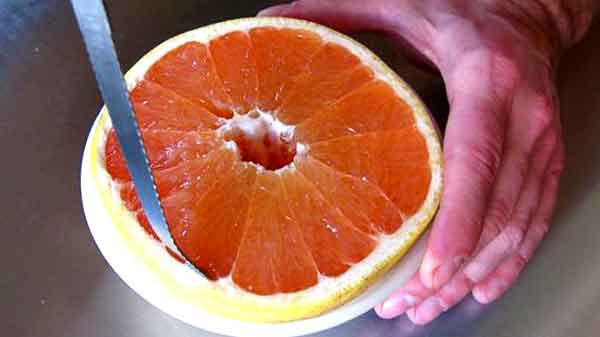How to Choose, Store, How to Use Grapefruit & Benefits of Grapefruit | Calories and Nutrition Facts
Grapefruit, is a large, yellow citrus fruit very rich in vitamin C, calcium, magnesium, folate and potassium with great antibacterial properties. They contain salicylic acid, which helps with arthritis.
How to Choose Grapefruit
If you are choosing a grapefruit for yourself, don’t judge by its color. Judge by its heft. A fruit’s weight is determined by the amount of water (juice) it holds. The more sugar a piece of fruit contains, the more water it will hold, so a heavier fruit means a sweeter fruit. Avoid those with thick, rough skins or overly soft spots. Grapefruit: Resilient, with no soft patches. (All citrus fruit should feel heavy with juice.)Benefits of Grapefruit
Excellent for cardiovascular health, as a blood cleanser, and effective against some allergies and infections of the throat and mouth, they also hydrate the skin and help with digestion. Its benefits include helping reduce the risk of cancer and heart disease. Grapefruit is also high in fiber. 50% is the insoluble kind (that doesn’t dissolve in water, and so helps to maintain healthy digestion) and the other half is soluble fiber, particularly pectin, known to make you feel full (very helpful in a weight loss program), regulate blood sugar levels and help lower cholesterol.How to Eat Grapefruit
Peel and eat, especially in the morning. Also grapefruit juice mixed with apple and/or orange juice. The best way to consume grapefruit is to eat the whole segments. This way you get the full benefits of the fiber as well.- Gratin of Citrus Fruit and Grapes with Sabayon: segments of orange and grapefruit with firm grapes make a pretty winter gratin.
Time needed: 5 minutes.
- First separate the perimeter of the flesh from the rind.

How-to-Peel-and-Slice-a-Grapefruit-Step-by-step-with-photos-1 - Then separate each wedge from the one next to it. Be sure to cut both sides of the dividing membrane.

How-to-Peel-and-Slice-a-Grapefruit-Step-by-step-with-photos-2 - This allows the removal of a perfect, luscious wedge with little hassle and little mess.

How-to-Peel-and-Slice-a-Grapefruit-Step-by-step-with-photos-3
- All grapefruit are hand-picked, no mechanical harvesting is ever used.
- If you are in the possession of a grapefruit that is less than ripe (you can tell once you cut the grapefruit in half and see how thick the skin and rind is), we recommend the old fashioned method of broiling grapefruit.
- There’s never a speck of membrane on them, and they’re not mangled at all. The trick is not to peel, separate and pick off the membrane with your fingernails. It’s to do it all with a knife.